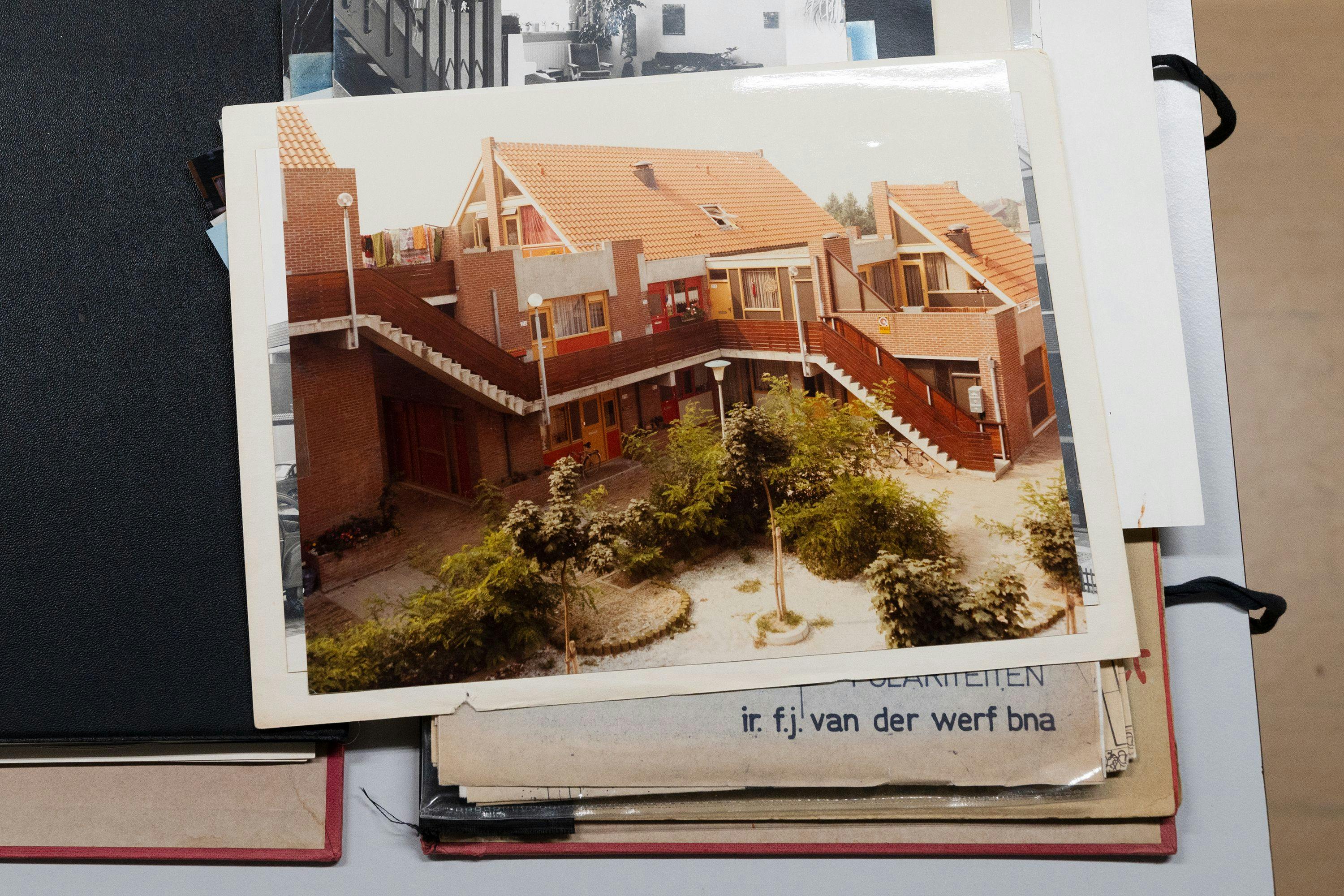Pre-Inventory of the Aldo and Hannie van Eyck Archive
This summer, the Aldo and Hannie van Eyck archive was officially transferred to the National Collection. However, this does not mean that the archive is already stored in Rotterdam. In fact, it is still located where it was created, in the house where Aldo and Hannie lived and worked. A number of preparations must be made before the archive can be transported, including a pre-inventory.
15 October 2025
A team of archivists and collection managers has been working on site to assess, select and repack the archive in preparation for its transportation to the Nieuwe Instituut, where a full inventory will be conducted. This preparation is necessary to safeguard the archive’s physical condition and to carefully plan the next logistical steps.
The donor, Aldo and Hannie van Eyck’s daughter, has provided a comprehensive project list, describing the archive at both the project and item level. This list is important for verifying the presence of all the materials and for maintaining the organisation of the archive as it has been preserved over the years.
Exploratory design proces
Many of the drawings have been flattened and stored in acid-free envelopes in filing cabinets. Even the smallest drawings, which are barely bigger than a postage stamp, are given a unique inventory number. This makes it easy to link them with the project list.
This careful handling of the documents ensures that this part of the archive is in excellent material and administrative condition. It enables us to easily trace the intensive exploratory design process that preceded the completion of the Sonsbeek Pavilion in 1966. This process unfolds in over 60 sketches in which Van Eyck explored three different concepts, each with different ideas about structure, direction and spatial relationships. The final coloured plan shows how Van Eyck carefully placed each artist’s sculpture in the pavilion, with notes to indicate their relationship.
Drawings of the Sonsbeek Pavilion. Photo: Emily Wijns.
1 of 3
Villa Robert van Eyck
However, there are also some interesting projects that have not yet been assigned an inventory number or label. For example, there is a stack of sketches for the unrealised design of Villa Robert van Eyck (Aldo’s brother) in Saint-Paul-de-Vence from 1968. The design aimed to open up the floor plan so that the impressive landscape could also be experienced from inside. This was achieved through two covered terraces, situated at different heights and overlooking each other over an open space in the centre. In this way, the outside became visible and part of the interior. The sketches show the courtyard around which all the rooms, including the kitchen, living room and bedrooms, were arranged.
Tubes, boxes and binders
Then there’s the part of the archive that’s stored in tubes, boxes and binders, or that lies scattered across shelves and in cupboards. It is mainly these items – project documentation and correspondence – that provide deeper insight into how a project developed from initial concept to completion. To ensure optimal protection of their physical condition during and after transport, these materials are repacked in acid-free folders and boxes. As this part of the archive is not yet included in the existing project list, extra care is needed to determine exactly which material belongs to which project.
Insect-free condition
Following these preparations, the entire archive will undergo an anoxia treatment. This non-toxic method eliminates harmful organisms such as silverfish and their eggs, which are common in many household and archival environments. This preventive measure ensures that the archive will enter the repository and inventory phase in a safe, insect-free condition.
Models
In addition to the “paper archive” containing drawings, project documentation and correspondence, the acquired archive also includes 23 models.
Read more about the models.


